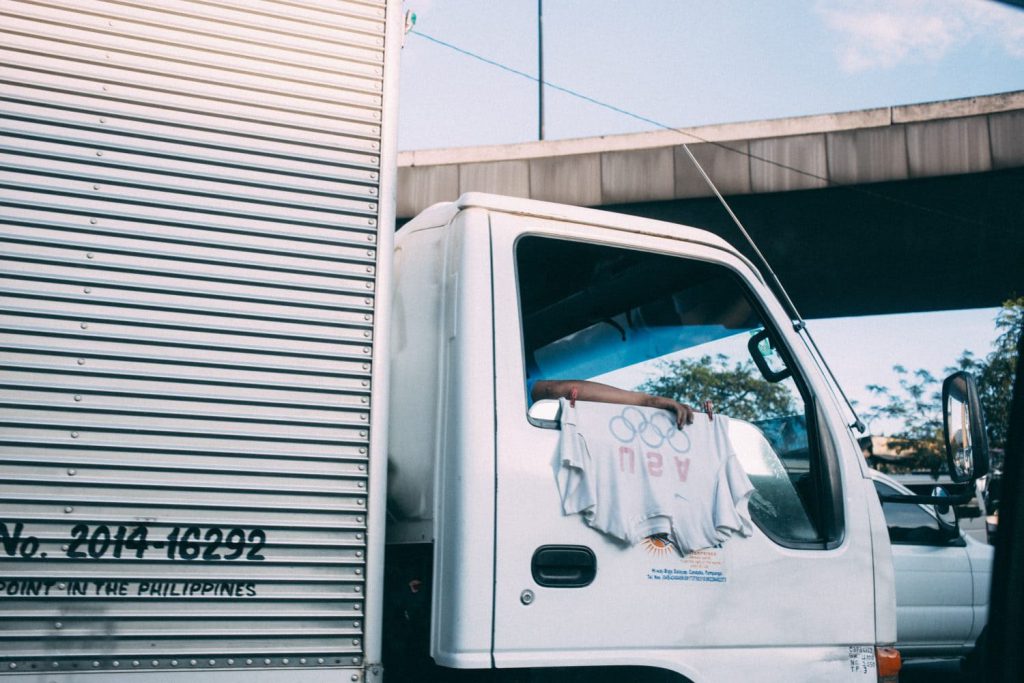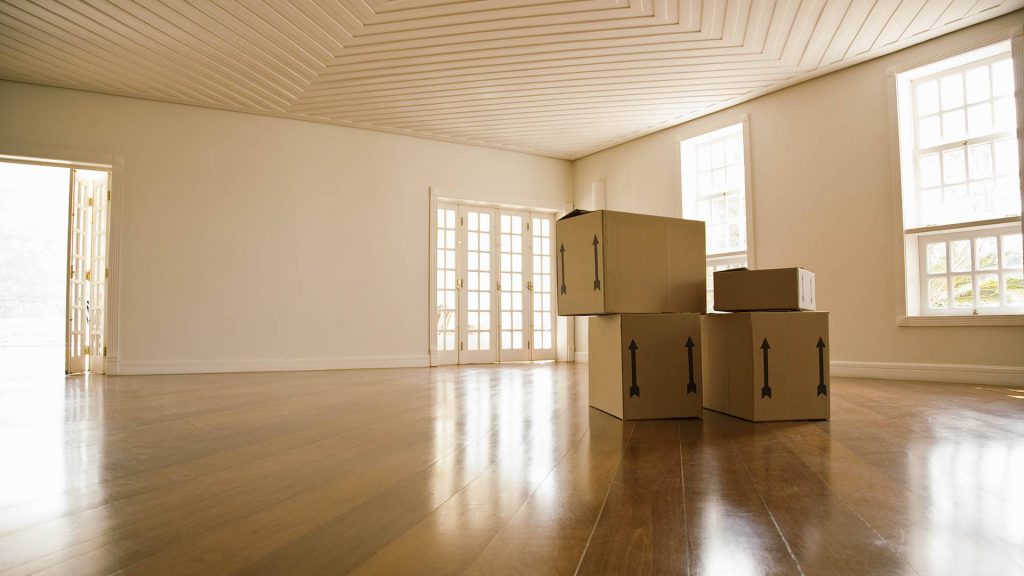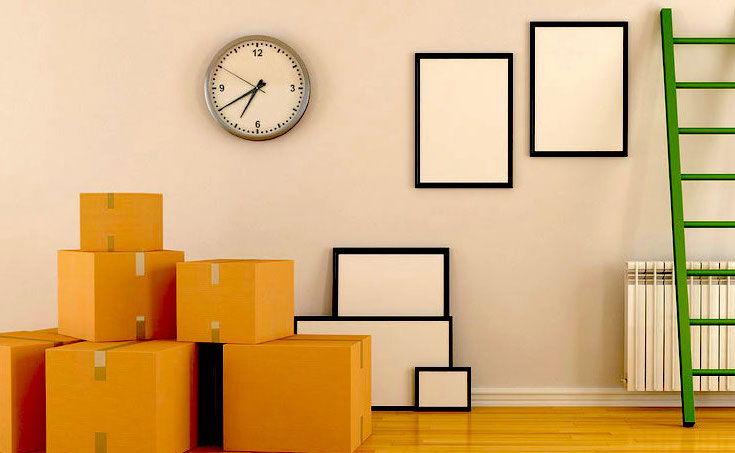
Excited to move into your new home, but unsure how to start? Are you overwhelmed by the immense number of items to move? Don’t worry! We have compiled a comprehensive moving inventory checklist of household items that you can track when moving.
You can engage a professional moving service for your project, or you can choose to do it yourself.
Before you move, check and tabulate the number of items to move into your new house and the number of things to dispose of. This will help in:
- Making sure that your items are not lost during the move.
- Differentiating the items to dispose of and items to move.
- Ensuring that you have packed and unpacked all the necessary items and nothing is left out.
- Serving as a moving inventory checklist that you can confirm with the mover.
Tabulating the numbers ensures an accurate quotation with no unnecessary additional charges by the professional mover.
After the move, unpack the items that you have indicated to be unpacked and tabulate the numbers again to ensure no lost items.
Here is a moving checklist to assist you in your move from start to finish.
Most moves require two months of preparation in advance.
Our moving checklist will ensure that you have a smooth-sailing and fuss-free moving experience. Let’s get started!
Moving Cost Calculator : Price Estimates in Singapore (2024)
Here is a moving cost calculator for you to estimate the cost of house-moving.
(This calculator is currently in beta phase. All prices are estimated.)
Two months prior to the move
Major Sort and Declutter
Do a major cleanse of your entire house. Decide what you want to keep and what you wish to discard. There are so many items accumulated since the start of your stay in this old house.
You want to purge unnecessary items that you will most likely not use again. Achieve a hassle-free moving and clutter-free new home by getting rid of unnecessary items.
Here’s how you can get started:
- Get everything out from your closet, cabinets, drawers and display them on the floor
- Categorise them into Trash, Recycle, Donate, Keep, Sell, Undecided, Documents
- Trash and Recycle: Get rid of these items
- Donate: Contribute to charity by donating your unwanted items. Here are some avenues for donation in Singapore:
Where | What to donate | What is it for |
Furniture and almost every kind of donations | Underprivileged elderly, families and children | |
Household items, computers and desktops | Migrant workers | |
Medical aids, furniture and home appliances | Voluntary Welfare Organisations (VWOs) | |
Canned food, dried goods | Voluntary welfare organisations (VWOs), charities and soup kitchens. | |
Apparels, furniture, houseware | Intellectually Disabled | |
Books | Children in more than 10 countries in the world | |
Baby-related supplies | Pregnant teenagers (21 and below) | |
Clothes and accessories | Victims of domestic violence, Young women | |
Clothes and accessories, soft toys, bedsheets, covers | People with special needs, elderly folks |
- Keep: Decide which room to store the items in at your new house by labelling the boxes.
- Sell: Support your moving expenses by selling your unwanted items. Here are some avenues of selling in Singapore:
- Carousell
- Cash Converters
- Swap and Buy SG
- Duke’s Bazaars
- Flea Markets by Fleawhere
- Karang-Guni.com
- Gumtree Singapore
- STClassifieds
- Undecided: Put items that you are unsure of whether to keep or not in a box and mark a date on it. If you did not touch for the next 3-6 months, donate or discard this box without opening it again.
- Documents: For important documents, create a folder or binder to organise your important documents. You can also store these documents, such as receipts and bills, on your phone. Apps include:
- Google Drive (Android/iOS)
- CamScanner (Android/iOS/Windows Phone)
- Genius Scan (Android/iOS/Windows Phone)
- Scannable by Evernote (iOS)
- FineScanner (iOS)
Decluttering might take a few days or a week, depending on your schedule. So, do set aside ample time to do an excellent one-time cleanup!
Engage a Move Out Cleaning Professional
One Month Prior to the Move
Know what you want to move
Before you contact movers, you need to know what you want to move to. After decluttering, you are in a better arena to choose what you want in your next house.
If you are deciding whether to change a piece of particular furniture, change during the move to reduce the time, effort and money spent on moving furniture you are about to change soon.
Download this moving inventory checklist to keep track of what you want to move.
Contact Multiple Movers
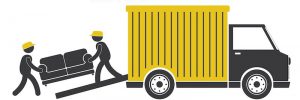
Call multiple professional movers for moving quotes. It may take a week or more as you need to schedule meetings with the movers for a viewing of your house. Follow this comprehensive moving guide on how to hire the right mover and the estimated pricing guidelines.
Your moving inventory checklist will come in handy here!
Also, ask the movers what supplies will be required if you want to purchase moving supplies by yourself.
Create a moving file

Get a distinctive file with a pocket folder to organise your home moving documents. Choosing a brightly coloured file is advisable, so it stands out even amidst the clutter when moving.
Use this folder to keep important paperwork for your home moving such as receipts, name cards, and other important documentation.
Store and keep track of all your receipts, supplies checklist, inventory checklist and contracts in this file. You will need the inventory checklist to ensure the movers delivered all the items and keep them intact.
Confirm the mover and schedule a moving date
Call the mover and confirm the date of the move. You may need to put down your deposit to confirm the booking date.
Ensure that you are free on the day of the move
Make proper arrangements so that you are free on a moving day. Take work leave if you have work that day.
Check with your apartment management
If you are staying in a condo, you may need to fill up and submit a moving form to the condo’s management. Most condos allow moving during weekday working hours (9 am-5 pm) and on Saturday mornings (9 am-1 pm). Moving on Sundays and public holidays is not allowed.
Check with your condominium management. If moving is not allowed on your scheduled date, coordinate another time with the mover. You may have to deposit an amount that is refundable after the move.
Speak to the movers, and ensure that they lay the lift with padding before moving to protect your deposit.
Parking labels and access cards

Notify the authorities which car will be accessing your apartment on the day of the move. Ensure they have the right access cards so that they do not get stuck outside the building due to multiple trips.
Two Weeks Prior to the Move
Purchase supplies
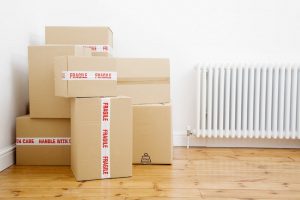
You can purchase supplies directly from the moving company. Some moving companies do include these supplies in their moving package so, do check with them. You may purchase supplies from these online companies as well:
- Buysomeboxes.com
- Cartonbox.sg
Take photos

You must take photos of your house, important items, electronics, and equipment. If anything goes wrong during the move, these photos can be used as evidence to confront the moving company.
Moreover, if an insurance claim is required, these are evidence for claims. Also, you can use these images to remind yourself how things are supposed to be placed or connected.
Here are some vital points that you can take images of:
| What to take photo of | What to check for after the move |
| Take a photo of every area of your new and old house: walls, doors, floors, inbuilt furniture, lights, panels, balcony, kitchen. | Check for any scratches, dents, damages to areas of your old and new house. |
| Snap the back of electronics such as TV, radio, speakers, computers, modems, gaming consoles. Take note of the serial number too. | Check that the wires are connected correctly to the right outlets and ports. |
| Photos of electronics, glassware, musical instruments, furniture, big items | Check that there are no scratches, dents, or breakage to these items. |
| Take videos of your electronics and appliances working. | Power start electronics and appliances. Ensure that they are working fine. Some damages may not be seen easily. These videos will help in justifying any potential spoilage made by the movers. |
Make sure that you timestamp your photos. This proves that the pictures were taken right before the move, hence making the movers highly liable for the damages.
After the move, recheck these areas again and raise any issue if you have with your mover.
Clear perishable items
Try to get rid of perishable items you don’t want to move like food and cleaning supplies. Buy cleaning supplies sufficient till the day of your stay in your old house. For food, finish cooking them before the day of moving. Too much food? Maybe you can invite your friends over for one last meal at your old house.
One Week Prior to the Move
Pack the necessary items
Using your packing supplies, pack your items into boxes and label them accordingly. You can find more packing tips here. It is important to keep all your important personal items, belongings and valuables in a box so that you can keep track of that box during the move.
Change addresses
Change of addresses is something that can be easily left out during your move. Set a time to sit down and contact all the necessary parties for an address change. Let them know when the change will be, i.e. the date of the move so that your mails and important documents are delivered correctly.
Update your address on these platforms:
- Change your address at https://www.ica.gov.sg
- Credit Cards: POSB, UOB, AMEX, HSBC, OCBC, or simply Google “Bank Name” “Change of Address”
- Newsletters
Items to set aside
Have a bag of essential items as you may be too tired on the day of moving to unpack your things.
Essentials include:
- A set of clothes to change
- Wallet and cards
- Essential Toiletries
- Medicine

Have a bag or box of cleaning materials. These cleaning materials will come in handy after the move. You can do the necessary cleaning before you unpack your items.
Have a bag of spare items for an emergency. Items include:
- Measuring tape
- Penknife
- Portable charger
- Extra set of keys for both houses
- Markers and pens
- Masking tape
Important Items to be Packed Last
There are some things which you may fear losing over the move. Hence, they are safer to carry along with you on your move to your new place. Place these items into a box and mark them so that you remember not to load these important items onto the moving trucks.
- Birth certificates
- Medical records
- Wills and stocks certificates
- Jewellery or important photo album
A few days before the move
Settle the old house
Here are some things that you need to do:
- Defrost the freezer
- Switch off and clean all the appliances
- Close your safe deposit box
- Confirm the time and venue for the movers again
- Prepare water and snacks for the movers and yourself
- Prepare payment after deposit
- Finish the final packing
Spring Clean the New House

Arrange a cleaner to clean your new house before the move. You may also get the moving company to do that, but most of the time, they outsource this task to third parties. So, you may want to hire your own or do it by yourself.
Engage A Professional Cleaning Company
During the Day of The Move
Follow the movers as they pack, load and unload. As they unload the items, check it against your inventory list to make sure all items are accounted for. Then, check for damages against your photos. Test out the toilets, appliances, utilities, water heater etc.
Once everything has been checked, you can start unpacking.
After Moving
If you require any insurance claim, you can do so after your move.
Also, check your mailbox in your old house in a week’s and a month’s time – some mails may continue to be sent there. Or you can get the new homeowner to contact you if any of your mails come in.
For homeowners handing over their house to the next buyer, you may choose to engage in move-out cleaning services to ensure the house is in a good condition when the buyer receives it.
Also, don’t forget to give your movers a good review if they had done an excellent job!
When planning to move out of your home, one important task is move-out cleaning. It’s easy to forget tasks like this, which is why having a moving checklist is crucial.
Services You May Require
Furthermore, we have included a services checklist that can help you decide what services you require the professional to fulfil. This ensures nothing is left out during your move, and your move is as smooth sailing as possible.
Services that you may require:
- Packing
- Moving (with vehicle provided)
- Moving (without vehicle provided)
- Unpacking
- Cleaning up
- Storage services
- Disposal services
Additional moving service that you may require:
- Flooring Protection (to protect against scratches)
- Moving Insurance
- Piano Moving
- Elevator Carry (if an elevator is involved in the moving)
- Flight service (for stairs in the house)
- Auxiliary Service (change of truck midway because the big truck cannot access your home compounds)
- Assembling and Disassembling of furniture (E.g. Beds, Cupboards)
- Appliance installation and preparation (E.g. TV Install)
- Handyman services
- Others
Things to note
Here are some tips and tricks that you should practice during your move.

- Tabulate the number of items before and after the move, and notify the professional mover if you notice any missing items.
- Take as many photos or videos of your personal items and valuables such as artwork, musical instruments, refrigerator etc. This is important as it serves as evidence for insurance claims if anything valuable is lost during the move.
- Label your boxes for different rooms and different parts of the house. This ensures quick and efficient unpacking when you move into your new home.
- Label your boxes in sequence. When you unpack, you can unpack easily and efficiently in the right sequence.
- Handle your valuables by yourself such as cash, jewellery etc.
- For items that require storing after you move in, store them similarly so that you do not need to pack twice.
- Stick the fragile sticker on things that you want to be handled carefully with caution by the movers.
- Highlight items that are highly flammable to the movers so that they treat them with extra care.
- Get clearance at the loading and unloading bay of the new and old house.
Important Information:
- Your home moving agent, including their quotation and other important paperwork (if your planning to get a home moving company to help you )
- The exact time of home moving.
- Include the billing information of your home moving service, find out the deadline to pay the bills ( Visit our cost guide to find out more on billing method and price estimates )
- Know when your utilities (e.g. water and electricity) are cut-off in your current home
- Know when your utilities will be turned on in your new home
- Particulars of your realtor, contractor and mortgage manager
To-do checklist:
- Inform your insurance agent of your new address
- Know the insurance company covering your home moving company, find out if your insurance will cover when your valuables are missing or when someone is hurt during home moving. Ensure that the insurance company covering you are a credible agency like MSIG, AIA, Prudential, etc.
- Plan for child care and animal care
- Inform any stakeholders of your new address and make sure someone is collecting your mail when you move out
- Make travel arrangements for your family, especially when moving overseas.
- Make use of online resources such as RealSimple to help you draft a checklist
Also, read the ultimate guide to moving. It covers:
- Things you need to know before engaging a professional mover
- Things you should take note of when speaking to the professionals
- Whether you should proceed with or without a professional
- Cost of hiring a moving professional & cost of moving by yourself
Packing & Moving Supplies Checklist
Bubble Wrap, Corrugated Wrap, Stretch Wrap and Corner Protectors
Bubble wrap has sealed air pockets that cushions items and prevents breakage. This bubble wrap should be used for packing fragile items like electronic equipment, vase, antiques and glassware.
The corrugated wrap is a strong and reliable material that is highly shock-absorbing. You can use this wrap for table legs, chair legs, stands and cupboard legs to protect from breakage.
Stretch wrap is a very strong material. It feels like cling wrap, but a much stronger version. It is sticky such that it sticks only to itself and doesn’t leave any sticky residue behind.
You use this wrap if you want to keep things in places, such as curtain rods and electronics. You can also use it to wrap surfaces of the furniture to prevent scratches.
Use corner protectors for furniture or items with sharp edges. You do not want the edges to go blunt during moving or the edges to cause scratches around the house. Piano movers will almost certainly use it to protect the fragile and expensive pianos when moving from one location to another.
Money-Saving Tip: These wraps may be expensive and you may not use them more than once. Other than these wraps, you can gather newspapers for free and use them as an alternative. While packing, there may be items that you want to dispose of such as old clothing, towels and blankets. Use those items as an alternative.
Boxes
There are many different sizes of boxes available. Use the small boxes for heavy items such as books, electronics. You do not want to lug the heavy and bulky boxes around the house and during loading and unloading.
Use small boxes to store small and delicate items such as personal belongings, stationery, plates and bathroom accessories.
Big boxes should be used to store light and big items like blankets, clothes, curtains, pillows and socks.
Ensure that your boxes are not too heavy such that the items will collapse through the bottom of the box. Also, protect your lighter items by placing heavy items at the bottom of the box.
Try to ensure that you fill up all the gaps in the box to protect your materials. You can use fillers or strips of newspapers to fill the gaps up. This is so that it will be easy to stack the boxes and to ensure that they don’t collapse easily.
Use edge protectors for boxes with heavy items to retain their shape and strength.
Money-Saving Tip: Check the neighbourhood shops like NTUC, mama shop and convenience store. They usually have a large number of boxes ready to be thrown away. Ask for the boxes kindly. I am sure they will be happy to provide the boxes to you for free.
Furthermore, check if they have liquor boxes that are no longer in use. Those are perfect for protecting glassware or containing small and fragile items.
Loose fills and Packing Peanuts
Use loose fills and packing peanuts to protect electronic products, music equipment or glassware. This absorbs shock, vibration and compression, and prevents the items from moving too much.
Money-Saving Tip: You can use recycled newspaper, unwanted towel, clothing etc. For newspapers, simply cut them up into strips and stuff them around the item.
Other tools – Scissors, Tapes, Box Cutters, Markers and Labels
Seal your boxes with durable tapes like shipping tape, duct tape or aluminium tape to keep the lids intact. Seal the sides of the boxes as well to act as an edge protector.
You can use masking tapes to label your boxes and items. You can label:
- Fragile items as fragile
- Boxes and items in sequence so that you know which to unpack first
- Boxes and items in colours to differentiate the located area in the house
- Important items as important so that you can keep track of them easily
Get a few scissors and box cutters that will help in packing and unpacking.
Find International Relocation Services
Other accessories
Have a mat, floor pads or lay the floor with a cupboard if you are using a trolley. This is to prevent scratches and damages on the floor.
Gather a few trash bags to put items you want to get rid of during packing. Remember to purchase a glove if you are particular about the dust and dirt during packing.
For mattresses, you may want to purchase a protective cover to keep dust and debris away.
A trolley will also be handy to help in shifting the boxes around the house and during loading and unloading.
List of Must-have Items (Downloadable)
Here is a list of items that will help in your packing needs.
- Boxes
- Extra Small XS – 37cm x 38cm x 33cm
- Small S – 40cm x 40cm x 35cm
- Medium – 63cm by 35cm by 27cm height
- Medium Long – 58cm by 42cm by 23cm
- Large with handle holes – 55cm x 47cm x 42cm
- XL (Superhard) – 57.5cm x 42.5cm x 52.5cm
- Jumbo Hard – 59cm x 46cm x 55cm
- Plastic bins
- Tape – Duct tape (for taping boxes) and Masking tape (for labelling)
- Scissors, penknife and box cutters
- Coloured Markers
- Bubblewrap
- Newspapers
- Trolley
- Cupboard for floor protection
- Trash bags
- Broom (Tends to be dusty after moving in and moving out)
This checklist has the recommended quantity for a 3-room HDB flat. Depending on your moving size, you can customise the number and purchase them at the packing supply store.
Where to buy supplies at a reasonable price
Online sites
Moving Essentials provide cartons, wrapping materials and accessories that are brand new and unused.
Delivery times and charges:
- Orders are delivered from Monday to Friday, within 4 working days.
- No delivery on Sundays and Public Holidays.
- For Next Business Day Delivery: S$45.00
- Saturday AM Delivery: S$65.00
- Orders over S$200.00: FREE
- Orders under S$200.00: S$50.00
- All charges exclude ERP and parking permit fee. In case the delivery address is within the CBD area, these charges will apply and to be collected on the day of delivery.
- If you place an order on Saturday or Sunday, the next business day is Tuesday.
Self-collection:
- Self-Collection at one of our warehouses in Jurong
- Payment has to be made in advance before self-collection.
- Self-collection service between 8:30 am -5:30 pm every Thursday is available.
- Lunch break is 1.00 -2.00 pm. Upon receipt of full payment, we will provide Jurong’s warehouse address for self-collection.
Available payments: Internet Banking/ATM Funds Transfer from DBS bank accounts, cheques, cash or credit cards.
Buysomeboxes.com
Buy Some Boxes provides cartons, wrapping materials and accessories that are brand new and unused.
Delivery times and charges:
- Free delivery for orders above S$50
- Orders under S$50: S$12
- Our delivery hours are between 10 am to 6 pm, Monday to Friday except for public holidays. There is no delivery on Saturday, Sunday and Public Holiday.
- All orders are promptly delivered the next working day.
Offline store:
- 194 Pandan Loop #07-08, Pantech Business Hub, Singapore 128383
Available payments: Credit card, PayPal or Cash on delivery
Cartonbox.sg
Cartonbox.sg provides cartons, wrapping materials and accessories that are brand new and unused. They also offer boxes that are only used once for sale.
Delivery times and charges:
- There is an interactive time slot available on the checkout page. Usually, the items can be delivered the next day of ordering.
- Orders booked after 6.30 pm will only be processed for delivery after 10 am the next working day.
- Free delivery for orders above S$50
- Orders under S$50: S$15
Offline Store:
- Blk 1002 Toa Payoh Industrial Park, #01-1471 Singapore 319074
- Walk-in purchase NOW for more assorted boxes not listed online.
Available payments: Credit card, PayPal
Moving House On A Budget
Don’t purchase boxes.
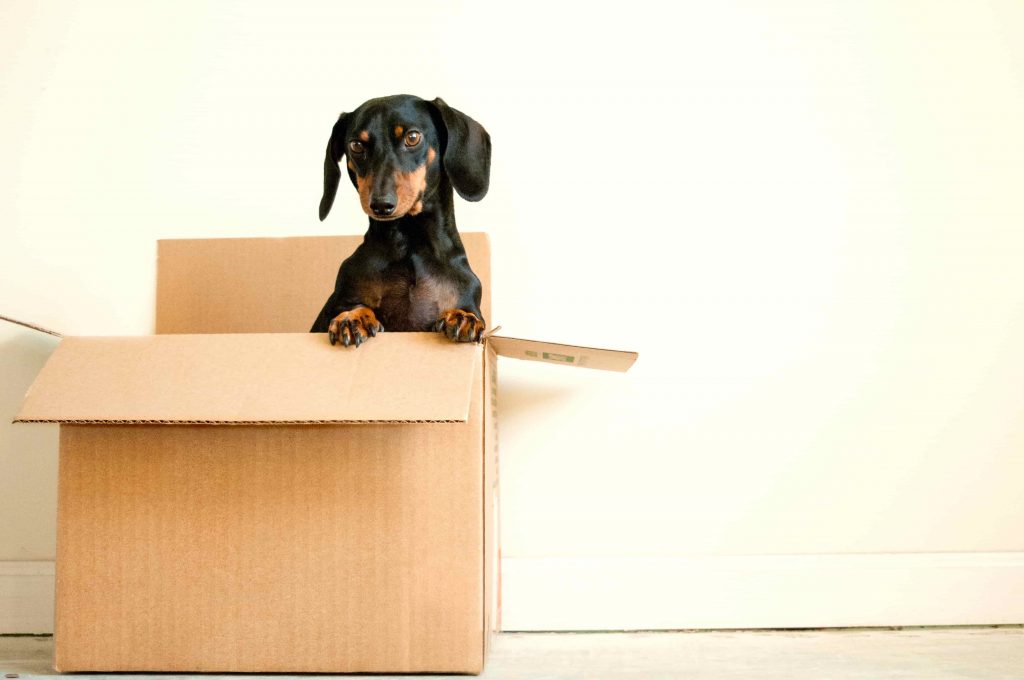
A single box costs about $2.50 to $4 depending on what sizes you require. For a typical 3-room HDB flat, you will need about $60 – $100 worth of boxes. That amount is unnecessary and can be offset easily.
3 to 4 weeks before your move, set aside time to gather second-hand cardboard boxes from local businesses nearby, which will be discarded anyway.
You can approach the nearby NTUC or convenient shop to ask whether they have unwanted boxes simply. Remember to check for the sturdiness of these boxes. Take note of boxes with sections in them such as liquor containers. Those will be helpful for your move too!
You can also ask your friends who have just moved for used boxes if they have just moved.
If you are unable to be collect sufficient free boxes, there are other alternatives available.
One, ask your potential moving company whether they provide resale of old boxes, whether they allow you to resell your used boxes after moving or whether they can include free tables in the moving package. Just ask them – you will be surprised at what they can help you with.
Only buy the necessary packing materials.
Bubble Wrap, Corrugated Wrap, Stretch Wrap, Corner Protectors, Loose-fill, Packing Peanuts, Scissors, Tapes, Box Cutters, Markers and Labels. There are so many types of packing materials for any kinds of need. These packing materials are suitable to have, but not necessary.
While packing, you may encounter old clothes, towels, unwanted draperies and cushions. Do not throw them away. Use these unwanted items to replace the professional packing materials. Old clothes can be used to fill up gaps. Towels and draperies can be used to wrap bigger, fragile items.
There will be some packing materials you would need, such as stretch wrap for big furniture and electronics.
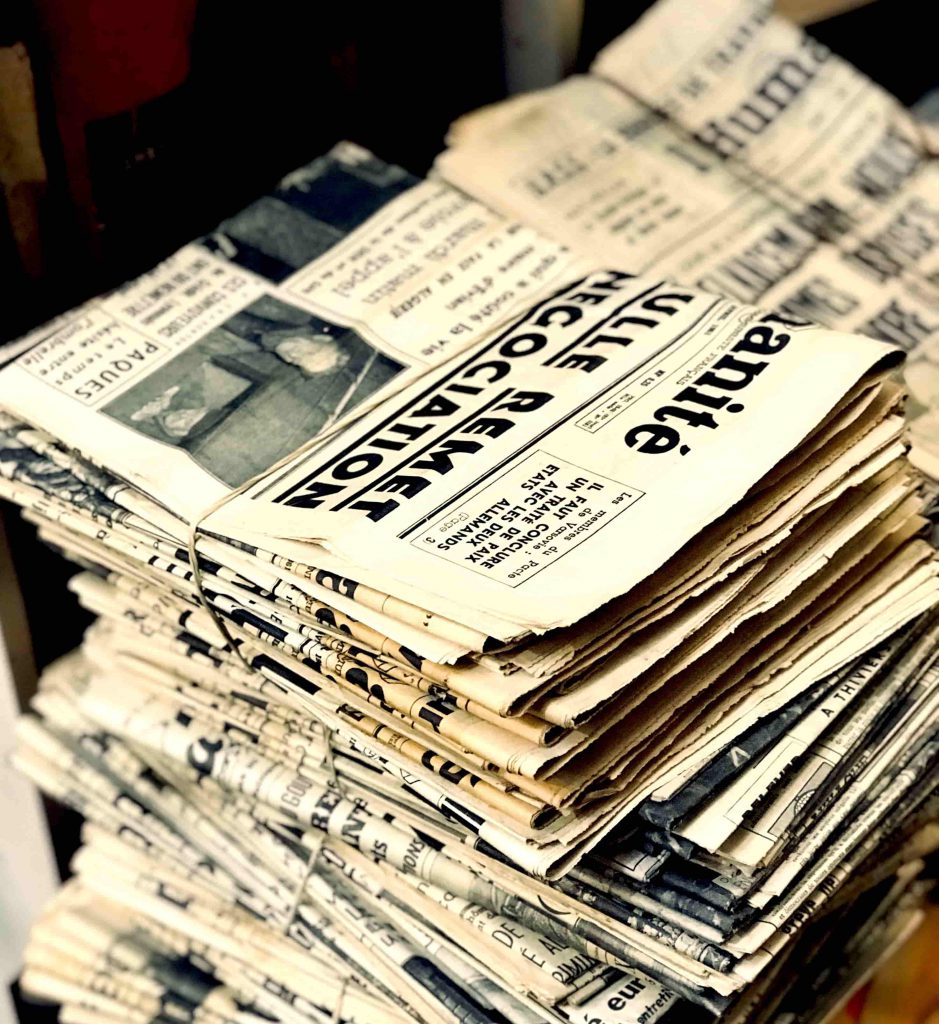
Newspapers are a great alternative, as well. Keep your newspapers after using them. You can also get free newspapers at MRT stations. Make sure you read those newspapers before using and shredding them. However, the newsprint on the newspaper may stain your delicate items. Hence, refrain from using papers to wrap or stuff fragile items like antiques, glassware etc.
Reduce the number of items during the move
When you are sorting and packing your items, there are bound to be items that you do not want. One way to move on a budget is to reduce the number of items in your move as much as possible.
It is difficult to throw our items once you see some value in them. You need to ask yourself:
- When did I last use this item?
- Will, I ever use it again?
- Is it taking up too much space?
Try to be objective in deciding whether to throw or not. Don’t get sentimental.
Think objectively about whether you need that item. If you have electronics, furniture, appliances that are old and will be replaced very soon, do the change right now.
Eventually, you will discard these items, why not do it now and reduce your moving expenses.
If you are moving highly fragile or expensive items, you may need to hire specialised movers such as piano movers.
Sell your unwanted items to make money.
Once you have reduced your moving items, you may consider selling these items for more cash. This will help offset the amount required for moving.

Sell your unwanted items to make money.
Once you have reduced your moving items, you may consider selling these items for more cash. This will help offset the amount required for moving.
If you have not used the item for years and don’t intend to use it anytime soon, it will best to exchange that item for more cash. A less cluttered home will result in a less cluttered mind. Learn to love and enjoy your new home.
Here are some avenues to sell your old items:
- Carousell
- Cash Converters
- Swap and Buy SG
- Duke’s Bazaars
- Flea Markets by Fleawhere
- Karang-Guni.com
- Gumtree Singapore
- ST Classifieds
Engage a mover but pack by yourself
We would recommend you pack your items by yourself and only leave difficult packing tasks to the professionals. Difficult packing tasks include dismantling of beds, mirrors, cupboards etc.
It would be best to leave the transportation, loading and unloading to the professionals. If you look at our cost guide, the price of a truck is about $60 – 100 per hour, including a driver.
A full service moving company charges about $180 per hour for full fledge moving service. The usual time required for moving a three-room HDB flat is about 3 hours by a professional.
If you are only renting a driver and vehicle, then you might have some troubles in dismantling particular furniture. Furthermore, you may end up spending more time and causing unnecessary damage to the car.
Hence, it is best to opt for a reliable moving company that offers an hourly rate. Help them as much during the moving process and cut down the number of hours in the moving. Try to reduce the hourly rate by opting for the separate purchase of packing materials.
However, if you want to cut even more cost, find family and friends to help you out and opt for vehicle renting with driver. Make sure to read up on the vehicle load weight, dimensions and dismantling of various furniture.
If you are afraid of a sudden increase in price or unexpected increase in hours, then opt for flat-rate pricing. This ensures that your rate is locked in and your move is worry-free.
Engage during office hours and non-peak hours
Most movers charge much more after office hours, and they don’t include ERP charge in the final quote. So, try to engage a moving when ERP charges are at the lowest and during office hours.
Also, move during non-peak hours so that you don’t get stuck in traffic and pay unnecessary hourly charges!
Get a few quotes
Ask a few movers for quotes. Most movers, according to industry standards, provide non-obligatory viewing of your house. Ensure that the quote covers all the necessary service and is made after a display.
Information like moving area, stairs, type of furniture to dismantle cannot be analysed over the phone.
If a quote is much lower than the rest, don’t be too happy too quick. Check whether the quote is binding or non-binding. Only accept binding quote which will not change unless you add more items to the list.
Check the professionals’ reviews to make sure they are trustworthy, and there are no unnecessary charges mentioned by past customers. You can view our movers’ directory and speak to any qualified professionals.
Related Articles
- Storage Space Rental Cost Guide in Singapore
- Best Van Rental Singapore Tips to Make Your House Moving Easier
This post is subjected to disclaimer.
We’re here to improve your home
Speak to hundreds of reliable pros, view their gallery, inspirations, and know the best prices with our resources.
Have full control over your home improvement projects with Homees.


